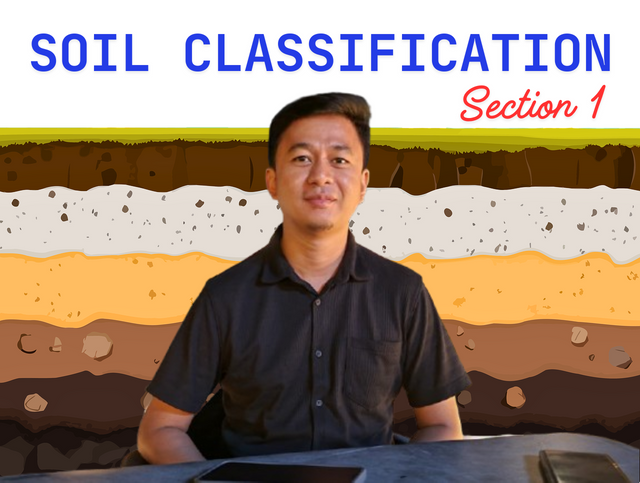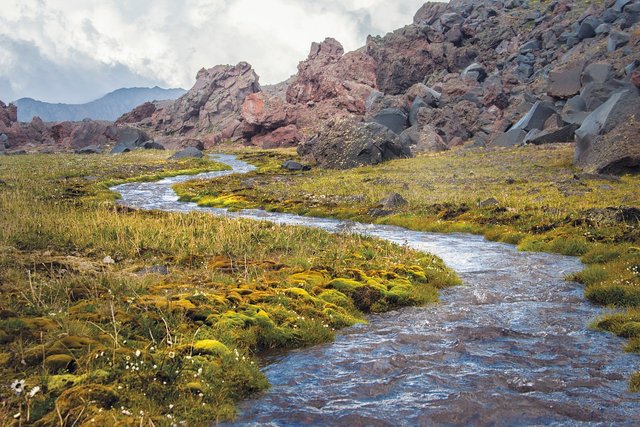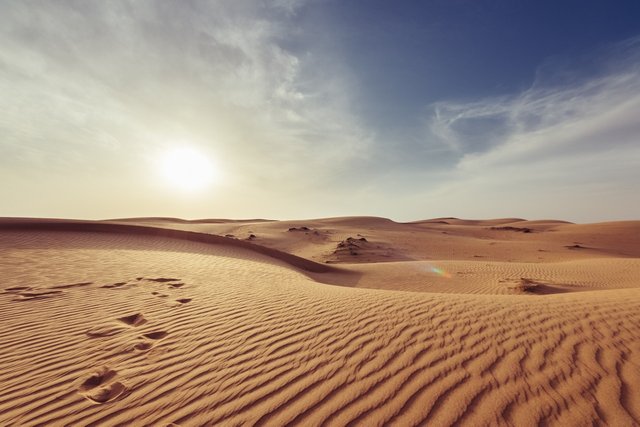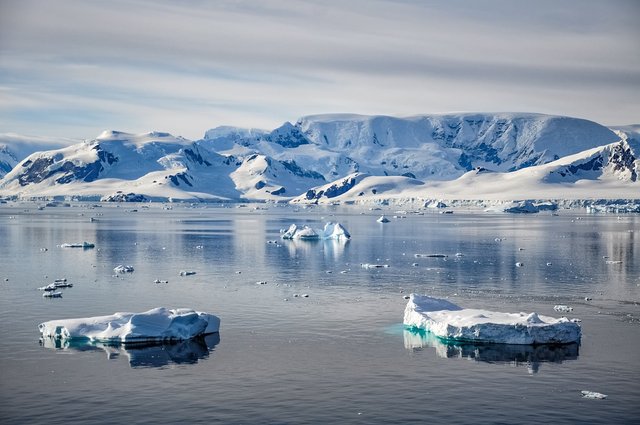It's great to be back in the Teacher and Student Community, with a new spirit at the beginning of this year I thought of sharing knowledge in my scientific field, not that I am an expert, but I also intend to repeat the lessons I have learned from college, in order to deepen my own knowledge and maybe enrich the knowledge of many people, because I see Steemit is and continues to develop its role as a Learning Platform.
I am a Bachelor of Civil Engineering who has actually taken the direction of competence in the field of Geotechnics, but over time it turns out that the implementation in a job that does not focus too much on things that are too technical and specific makes everything that smells of Geotechnics slowly fade in my daily life. To reawaken my engineer instincts, I will present basic material on Soil Classification, and for this first section I will explain the types of soil based on the formation process.

TYPES OF SOIL BASED ON THEIR FORMATION PROCESS
The earth's crust is generally divided into two categories, viz: rocks and soils. The word 'soil' is generally used by geologists to describe clumps or compositions of relatively weakly bound grains of minerals and organic matter that extend from the Earth's surface down to the solid rock layers. These weak intergranular bonds can generally be separated with little mechanical disturbance, for example by stirring them in water.
All soil minerals are derived from rocks as a result of weathering. The parent rock can be classified based on its formation process. Igneous Rock is formed at or at a certain depth from the ground surface as a result of the freezing of hot magma. Sedimentary Rock is formed as a result of the deposition of layers of soil particles in water, which deposits are then petrified over a long period of time. Metamorphic rocks are changes in the nature of igneous or sedimentary rocks due to high pressure or temperature.
The layers of soil that form can remain in place, or be carried by glaciers/ice rivers, wind, and/or water to other places to be deposited elsewhere. Based on this process, soils can be divided into four main parts: residual soil, water transported soil, wind transported soil. The process of soil formation will affect the characteristics of each soil formed.
Water Transported Soil
Water transported soils are divided into three groups, depending on the type of water that transports and deposits them, namely: alluvium soils (by river water), lacustrine soils (in lakes) and marina soils (on the coast / sea water).
 Source: Pixabay
Source: Pixabay
Alluvium soils is formed when river water from the mountains reaches the lowlands. Small particles floating in the river water are carried downstream relatively unchanged. Larger particles, such as sand, gravel and pebbles, are transported and rolled over the riverbed, eroding them into rounded shapes. The river water will also erode the riverbed to a relatively gentle area where the velocity decreases. Here larger particles will be deposited first followed by finer particles. Large alluvial areas will be formed where mountain rivers reach lowlands. This process continues until an alluvial plain is formed and the river changes direction.
Lacustrine soils are formed when lakes serve as deposition sites for soil particles carried by river water that empties into the lake. In arid areas, during floods river water carries a lot of gravel, sand and silt which is deposited to form deltas when the water velocity decreases as it enters the lake. New flow paths are always formed in the delta area so that the deposited soil is rarely homogeneous. Deltas can be thin or thick and can reach thicknesses of up to several hundred meters. Finer particles are transported to deeper water where the deposition process forms alternating layers of coarse and fine particles.
Marina soils form when river water empties into the sea. When the velocity of the river decreases, the coarse particles carried by the river are deposited first and the finer particles are deposited later in the distance. The sedimentation process is similar to that in lake areas, viz: deposition occurs in relatively calm water and is free from the influence of waves. Fine particles deposited in salt water will flocculate and form low specific gravity soil structures with characteristics influenced by the salt content in the porewater. Once these deposits emerge from the surface of the sea, the salt content is gradually dissolved by the absorption of fresh water, eventually forming highly sensitive marina clays.
Wind Transported Soil
 Source: Pixabay
Source: Pixabay
Soil of Glacial Origin
 Source: Pixabay
Source: Pixabay
Long ago, the earth in the north, at 40 degrees north latitude, was covered by continental ice. The spread of this ice mass eroded, mixed, transported and deposited loose rocks and soil in various ways. Material deposited directly by ice is called TILL. This type of soil is very diverse in texture, with particles varying from boulders to clays. Meltwater from ice sheets carries sand and gravel and deposits it in front of ice rivers and is called OUTWASH. When the meltwater flows between the plateau and the ice river, a lake is created where ice lake deposits are formed. As water flows into the lake, coarse material is deposited on the lake shore and forms sand and gravel deltas. The finer silt and clay particles turbo to the center and are deposited in still water. In winter, when the ice melts and the flow of water into the lake stops, the finer grains continue to settle producing varved clays.
Specialty Soils
Special soils are so called because of the presence of unusual soil materials that also affect the behavior of the soil, for example: expansive soil, collapsible soil, and organic soil.
Expansive soils are soils that have the potential to expand (increase in volume) when exposed to water, such as clays with high levels of montmorillonite, which is a type of soil that expands easily.
Collapsible soils are soils with the potential for a large volume reduction when experiencing an increase in moisture content, this volume change can occur without any change in load from external factors, and collapsible soils are generally found in arid areas.
Organic Soils are soils that contain many organic components, the thickness of which can be from just a few meters to tens of meters underground. This type of soil generally has low shear strength and is prone to large settlement.
Thus my opening writing to fill the learning and teaching space in the community, hopefully it can enrich the insights of the readers, and my respect for all of you.

#steemexclusive
@ myteacher
yes
no
With your knowledge, especially in Civil Engineering, you should try to apply to be one of the teaching team in the 23rd season. I think it would be a unique material to teach practical knowledge to the general public.
Downvoting a post can decrease pending rewards and make it less visible. Common reasons:
Submit
Thanks for your great suggestion, I am motivated and starting to consider it. Basic sciences in civil engineering can be a good knowledge for people in general, and if interested there could be simple calculation techniques that can be learned for their own needs, for example related to materials or costs needed to build a building construction.
Downvoting a post can decrease pending rewards and make it less visible. Common reasons:
Submit
Start as soon as possible to plan your course.
Downvoting a post can decrease pending rewards and make it less visible. Common reasons:
Submit
Okay, this might be my first resolution of the year.
Downvoting a post can decrease pending rewards and make it less visible. Common reasons:
Submit
https://x.com/firalurjaf/status/1877641991523270971?t=Sc3_ptG-zVhhlPACT8z8Eg&s=19
Downvoting a post can decrease pending rewards and make it less visible. Common reasons:
Submit